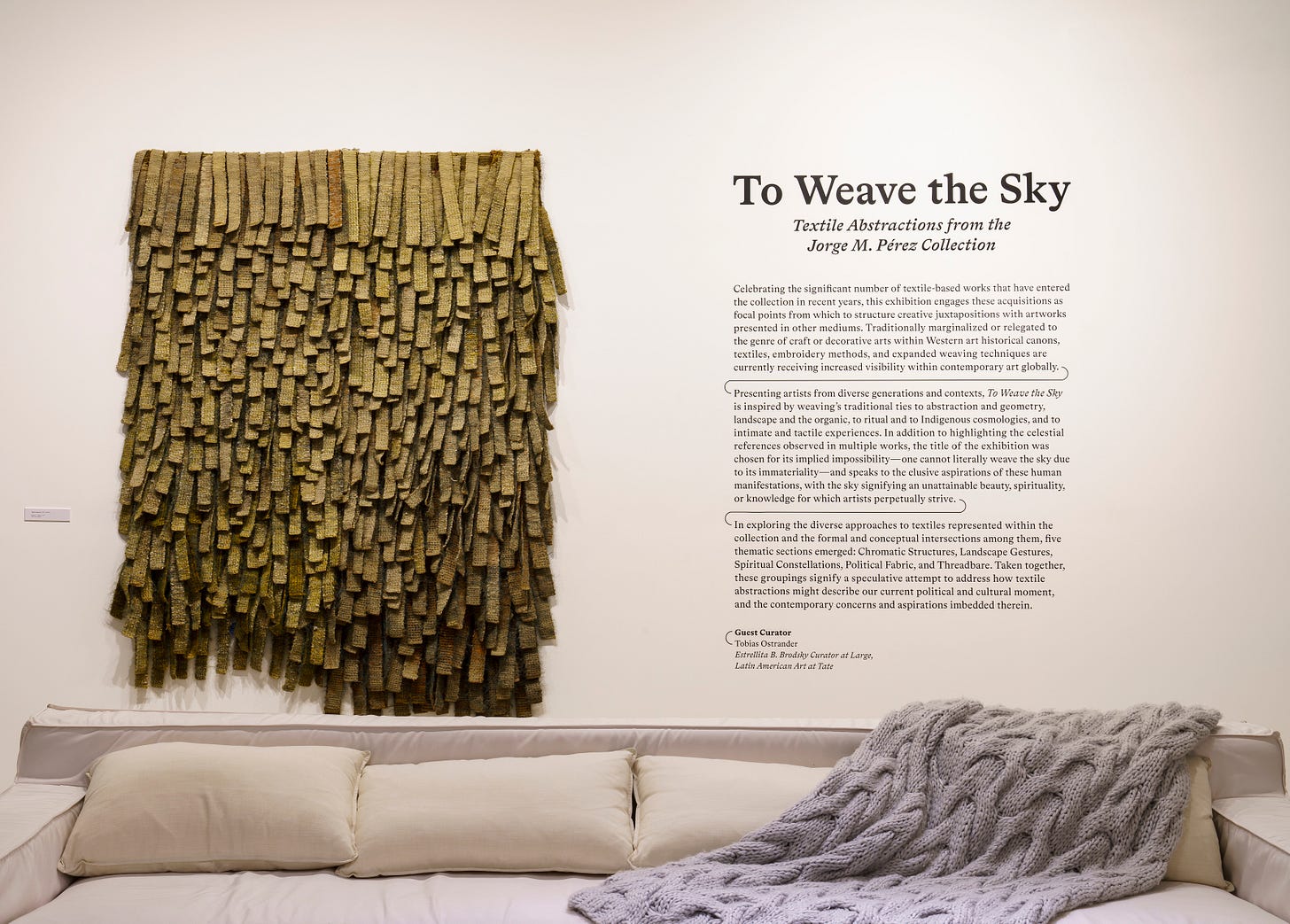Two of our favorite exhibitions will remain open in the months to come after the frenzy of Art Week has settled and were highlights of the museum experience at a time when so much attention goes to fairs. This author’s favorites: at The Bass, Nam June Paik: The Miami Years and at El Espacio 23, To Weave the Sky: Textile Abstractions from the Jorge M. Pérez Collection. Essentially, the two shows cover a breadth of art making from the timeless tradition of working with fiber to the exploration of new technologies—in this example, video was employed as a digital artistic medium.
At The Bass
A little-known fact about Nam June Paik, a pioneer of video art, is that he spent his last years in Miami. From the mid-1980s to his death in 2006, Paik resided in Miami where he continued his exploration of digital media as an artform. The Bass exhibition examines the artist’s close connection to Miami. Central to the exhibition are materials documenting two sculptural installations Paik created for Miami International Airport: WING and MIAMI. During the 1990s, travelers encountered WING in Concourse B (this piece was made of 100 television monitors, assembled in a biplane-shaped, neon frame, with a propellor) and MIAMI in front of the Customs exit doors in the lobby of Concourse E (74 monitors were arranged to spell out M-I-A-M-I). A flow of images from South Florida of palm trees, flamingos, beach scenes, and traffic moved across the screens of WING and MIAMI. Although the two installations no longer exist, the exhibition shows documents from Paik’s public art projects and the videos that played on the multitude of TV screens at the airport. Several of Paik’s robot-like sculptures made of TVs, cameras and electrical materials are included in the exhibition to remind us of the artist’s wit and genius to make new and different kinds of art.
Don’t miss this exhibition. On view through August 16, 2024.
At El Espacio 23:
An outstanding exhibition at El Espacio 23 , To Weave the Sky: Textile Abstractions from the Jorge M. Pérez Collection, honors fiber art. With work by over 100 artists from around the world, the exhibition is conceived around five themes, each presents fiber art in dialogue with artworks in other mediums. The exhibition is vast! As a teaser, three artists are highlighted to provide a peek at the range of art found in the exhibition. Upon entering El Espacio, a “vintage” wall hanging by Olga de Amaral anchors the room. The 1971 woven sculpture by the Colombian textile artist exudes warmth with its shaggy bulk woven with coarse brown-tan wool. It’s a fine piece to start the exhibition as it signals the fiber art movement of the 1960s when artists (mostly women) looked to ancient traditions —weaving, knotting, wrapping, and twining—for inspiration and process.
Further into the exhibition, a later piece by Amaral is suspended from the ceiling casting a delicate haze of rainbow colors. The two works by Amaral mark significant moments in her long career as well as indicating the depth of the collection of fiber art at El Espacio. Another work that caught our attention is made of clay and burlap. Nnenna Okore, an Australian-born Nigerian artist, uses biodegradable materials in her practice to call attention to ecological concerns. In Achi (2008) the earthen-colored clay cylinders create striations reminiscent of geological sediments. The British Nigerian artist Yinke Shonibare is not a fiber artist per se, he commandingly works across media in painting, sculpture, photography, and film. Yet a hallmark of Shonibare’s work is his use of African print fabrics to explore race and colonialism. At El Espacio 23, Shonibare’s figure (a headless mannequin), is dressed in a fancy, ruffled Victorian dress, made of brightly colored, multi-patterned wax-resist cloth to unsettle assumptions of cultural identity.
The exhibition remains on view to August 2024. Take advantage and visit it many times.








